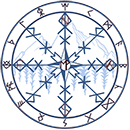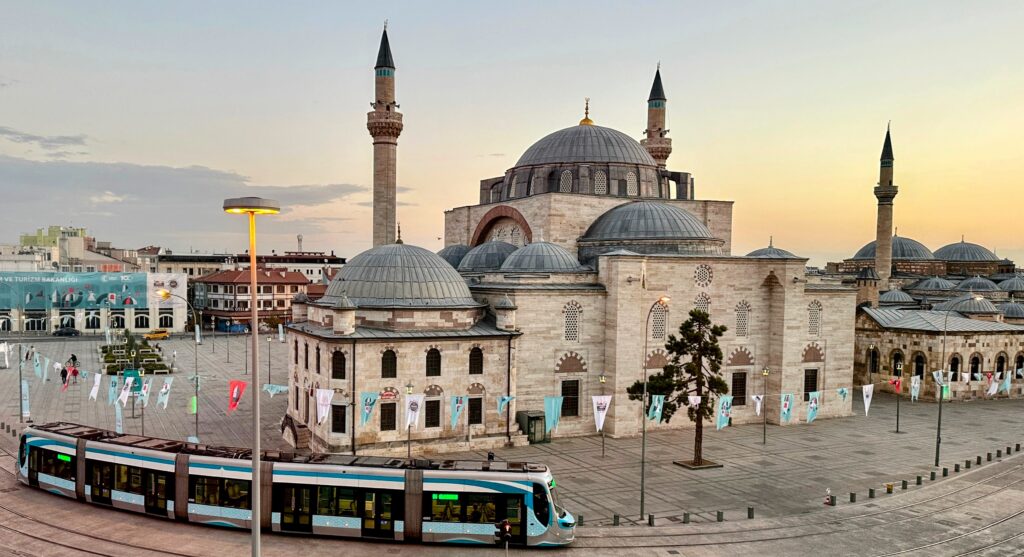
They won’t let me take a photograph of Atatürk’s pajamas! I’m here in his museum/mausoleum, in Ankara, Turkey. What’s the big secret? They’re just pajamas, though his look starched and formal, as if no human ever slept in them. I can photograph his car, though, all sleek black power and prestige, enshrined in glass. Last year, when my partner Tom and I traveled to the Balkans, I photographed Tito’s clothes in Belgrade, at his mausoleum/museum. The man who kept Yugoslavia out of the USSR has a blockish crypt, but his ties were cheerful. Another time, I photographed Evita Peron’s chic Dior dresses and shoes in Buenos Aires. It’s not just about fashion, it’s about style, which offers clues to history and culture.
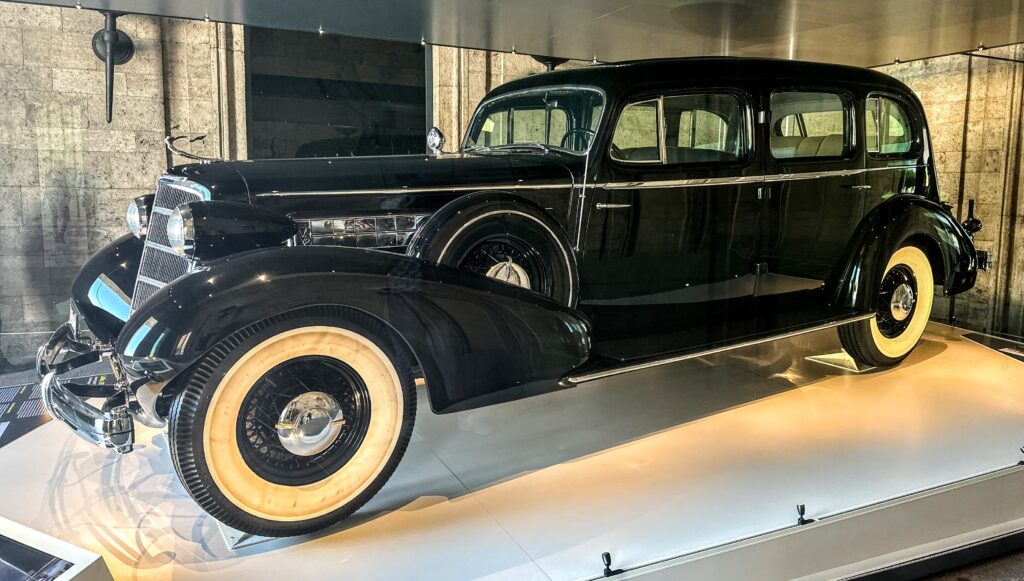
Mustafa Kemal Atatürk chose this then-backwater city in Anatolia as his capital, turning his back on Constantinople/Istanbul. He changed the alphabet to be Latin-based, banned the fez, and made Turkey secular, a fact of which they are very proud even though the country is almost completely Muslim. An important historical highlight: In the thirties, Jewish academics under Nazi threat, were imported to reform Turkish educational systems. This saved them. This story might seem paradoxical, but then everything about Türkiye is. (Recently, even the name of Turkey has been officially changed so as not to confuse it with the bird. Ha!)
In Istanbul, where we arrived, the cliché of East-Meets-West gains traction. Here, for the equivalent of $1.11, you can buy yourself a trip to Asia. It is about half hour away, right across the Sea of Marmara, if you are staying on the European side. (Only about three percent of Türkiye is in Europe). And on a Sunday afternoon, Tom and I spend most of the day on the long ferry ride up to the Bosphorus Bridge, drinking tea, past glittering white palaces, ancient forts, and nondescript blocky apartment buildings. We turn around just short of the Black Sea.
The Black Sea! I always want to go there! The conflict between Russia and Ukraine plays out there, now, and that, of course, is history. A couple days later, Tom braves the terrifying traffic of Turkish drivers, who make Italians look like they’re on Quaaludes, to get to the ugly/beautiful beaches of the deep blue Black Sea. I’ve never prayed so hard or so often. Later, we head south through the mountains and dry steppes of the Anatolian region, through Ankara and Konya, then southwest and north along the Mediterranean and Aegean Seas. It’s three weeks’ worth of deep time travel.
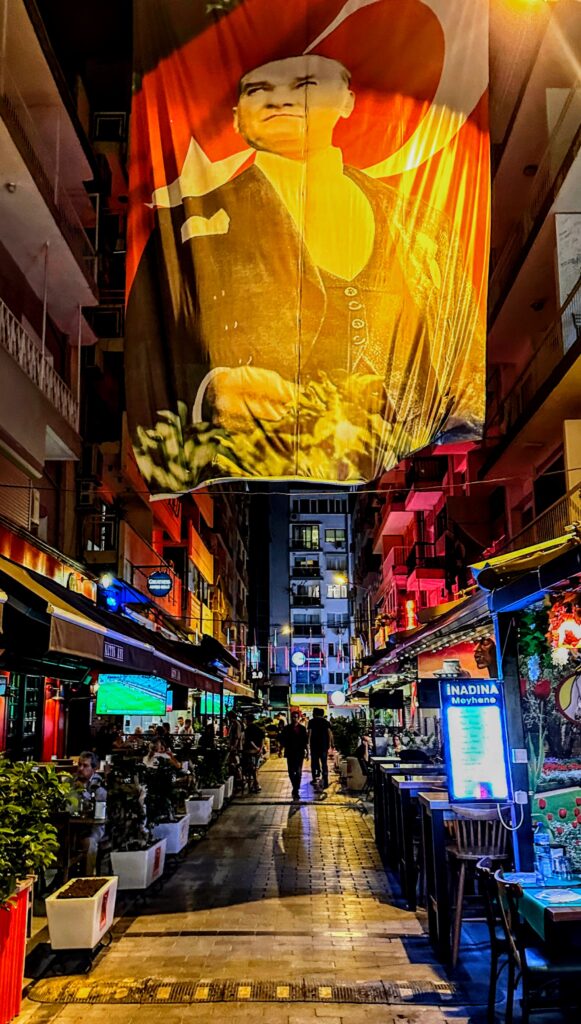
Meanwhile, Atatürk is everywhere. One local man rolls up his sleeve to show me his Atatürk tattoo. “You don’t understand,” he says, “it’s not like your George Washington. He gave us everything.”
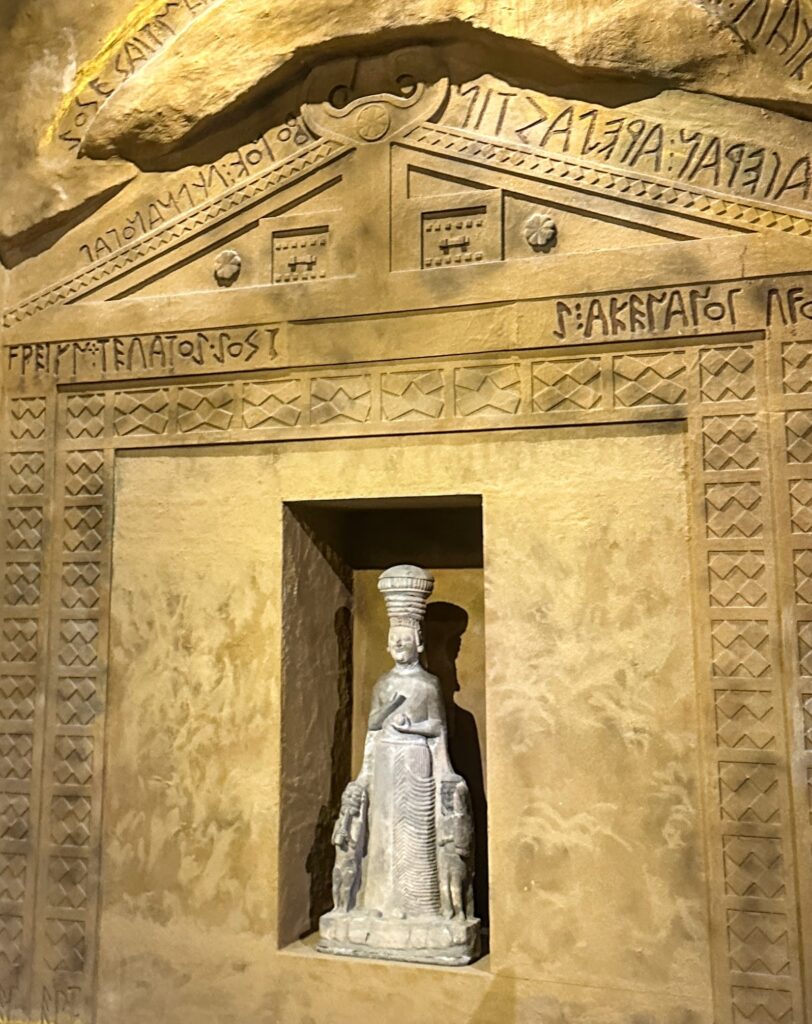
I guess Atatürk was not just the father of his country, but its mother, too.
The rounded mosques are beautiful. The gorgeous Blue Mosque, for example, is as breathtaking as the Sistine Chapel, an artistic argument for the existence of God; the minarets less so. They seem as aggressive as guided missiles – as omnipresent as Atatürk.
The Museum of Anatolian Civilization provides counterpoint. From 4,000 years ago, they’ve unearthed ancient goddesses. They breathe life back into history, and dislodge my growing discomfort with the patriarchy.
Ancient Ephesus had its goddess worshipers, too — namely Aphrodite. Then Saint Paul arrived, preaching in the resuscitated 25,000-person Roman theater before us. But people don’t change religions overnight. Pilgrims were drawn to Aphrodite, bringing “tourist dollars.” The whole Jesus thing was bad for business.
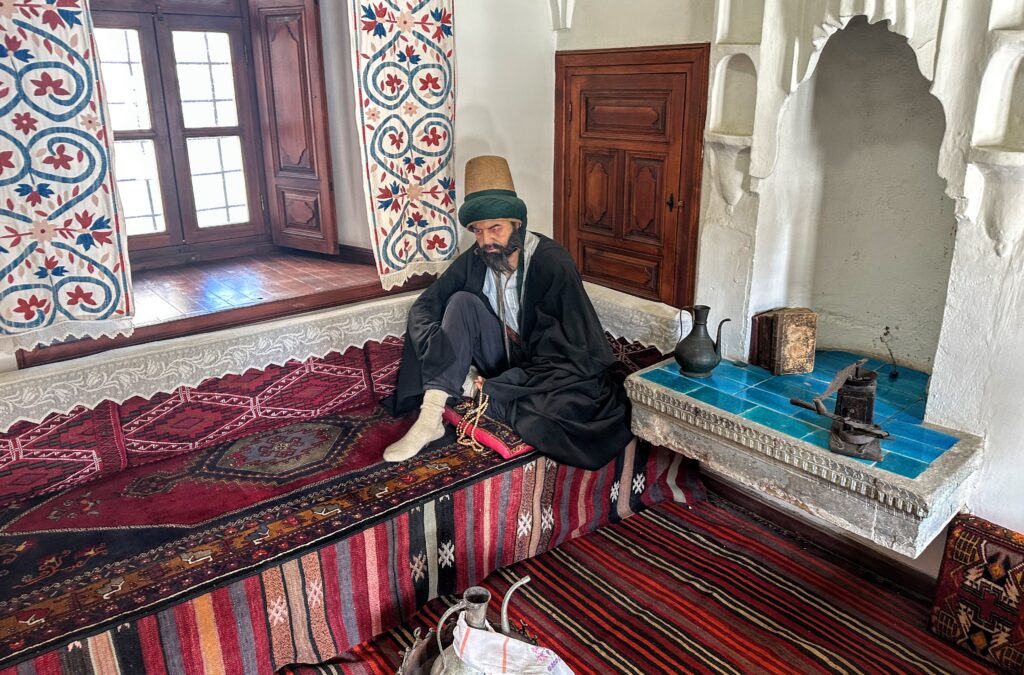
My own pilgrimage was, in part, to see where Rumi lived, in Konya. Here, there is the the poet/teacher’s mausoleum/museum/mosque, with devotees worldwide, some 800 years later. Many of his followers are back home in Taos. It feels refreshing, and grounded. By cosmic accident, we get to see a Whirling Dervish ceremony, part of Rumi’s legacy. Here, men and women, dressed alike (!) in their robes and hats, chant and spin to join the spiritual love of God and the World together. Oh, that we could do our own work in the world this way!
In Bergama, we ride a cable car up to the astonishing ancient Greek/Roman acropolis (another day, another UNESCO site!) We take a shortcut down, walking along a 2000-year-old Roman superhighway until–oops-it ends in steep, modern goat paths.
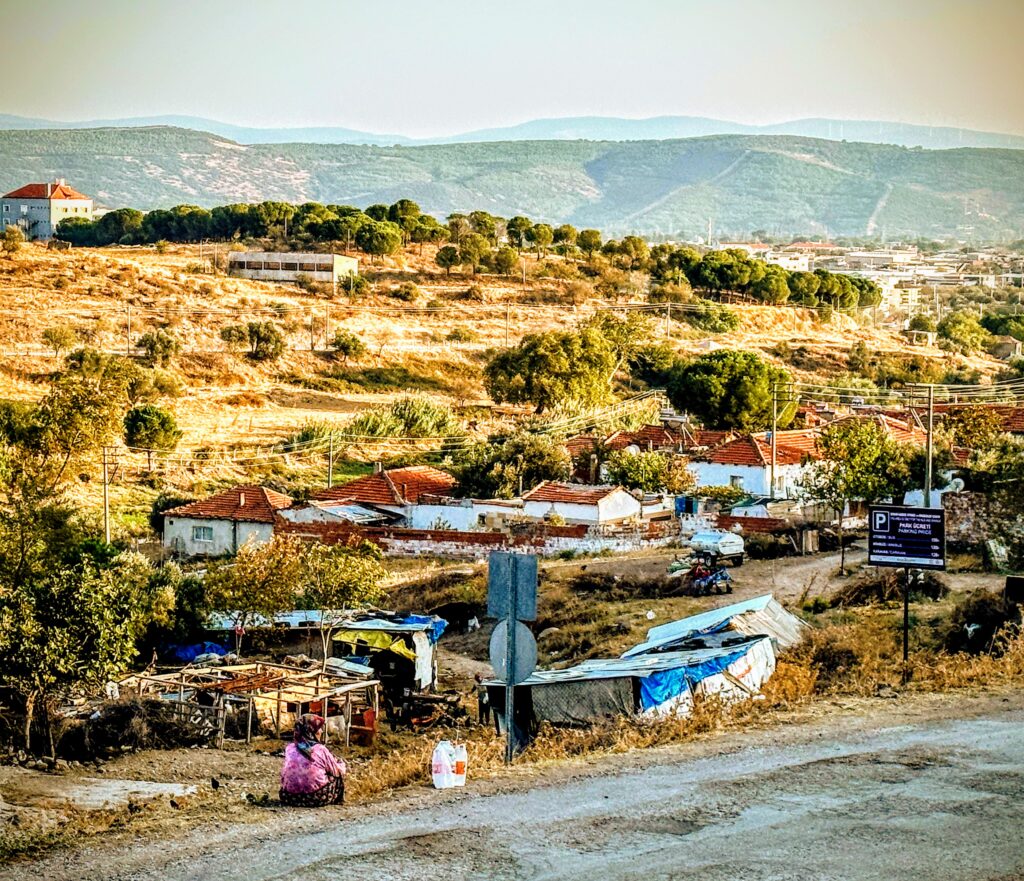
Here, an old babushka’d woman in pink sits at the side of the gravel road, staring off over the town and the mountains. I greet her with a smile and a “merhaba.” She returns the greeting. That’s all I’ll ever know about her life, and as a tourist, I regret not knowing more.
People everywhere are wonderfully warm-hearted and seek to connect. Another woman and I talk about our families – in French! (Many people don’t speak English). I talk about my part-Armenian granddaughter. Some of the Turkish authors I’ve been reading, like Orhan Pamuk and Hrant Dink, have been jailed for “insulting Turkishness,” after speaking of the Armenian genocide. We admit to huge divisions in both our countries. She sighs and says: “People are good, it’s just the politicians…”
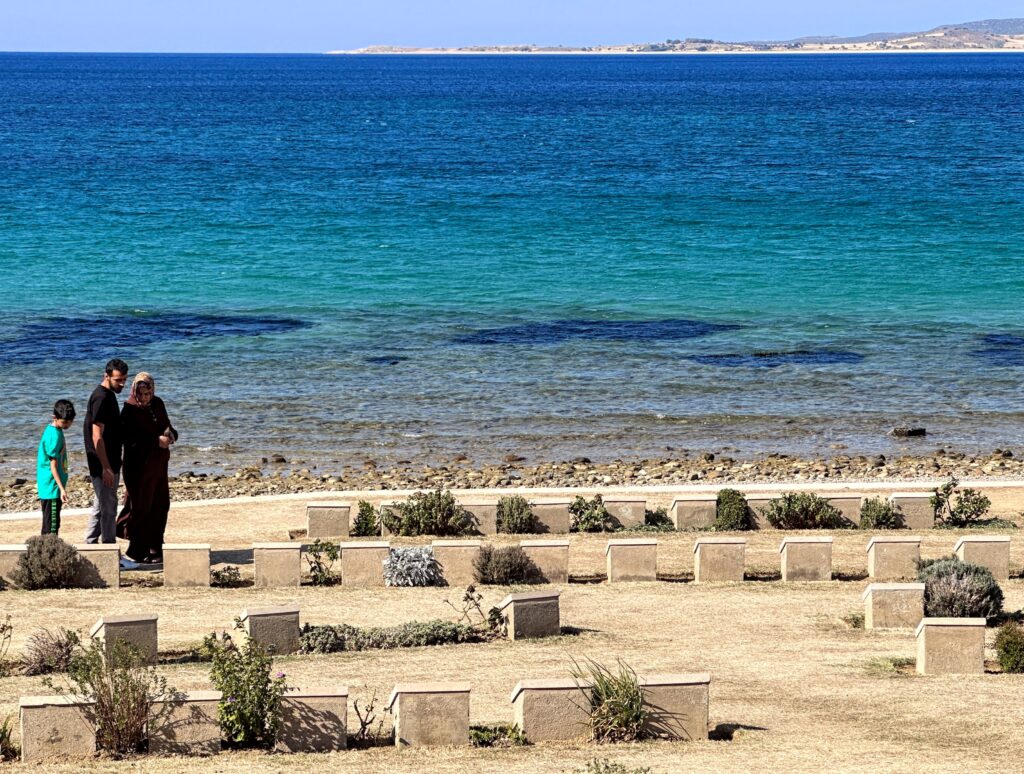
It’s October. Along the Aegean, people with ladders are picking olives, and men (with a kerchiefed woman beside them) drive tractors. They are farming on the Trajan plains, past where that Wooden Horse fooled those silly Trojans and Helen’s face launched a thousand ships. Here, history and mythology come alive.
Later, as we approach Gallipoli, Tom plays Eric Bogle’s haunting folk song about a young Australian soldier in WWI who returns home legless, glad there is no one there waiting to see or pity him. We stop at Anzac Cove, as do the Australians and Kiwis. They memorialize Anzac Day at home. At Anzak Cove lie some 10,000 of their countrymen, who died here one hot summer in 1915. The Turks beat them badly. The Turks fought with the Axis in World War I, but remained independent in World War II.
We’re headed to beautiful Plovdiv, not far into Bulgaria. But no, we are turned away: No taxis, no rental cars, no walking, no explanation. This must be the same kind of confusion that colors the experience of so many desperate refugees, also hoping to cross into Europe.
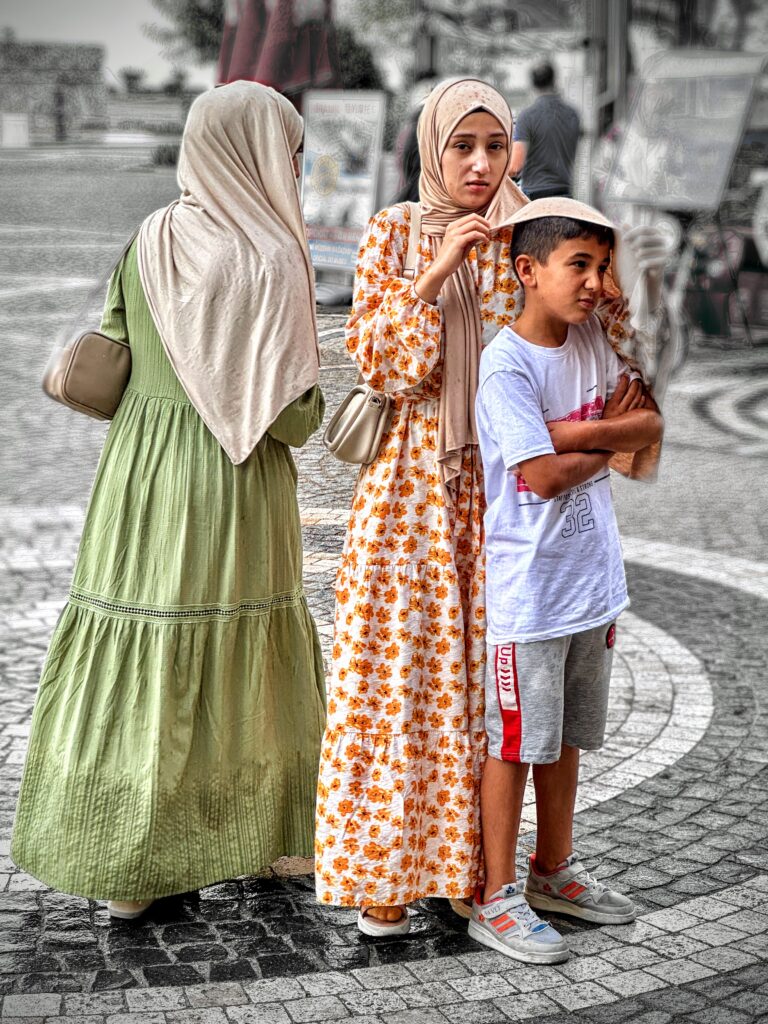
And so we retreat, back to Istanbul. I walk to Taksim Square, where in 2016, Erdoğan brutally squelched another enormous demonstration. I aim my camera mostly at the surrounding architecture and fashion.
Some burly guy is at my elbow, yelling at me…
“Hayer, Hayer,” (No, no!) I yell, hoping for some help from a hundred other tourists, also taking pictures.
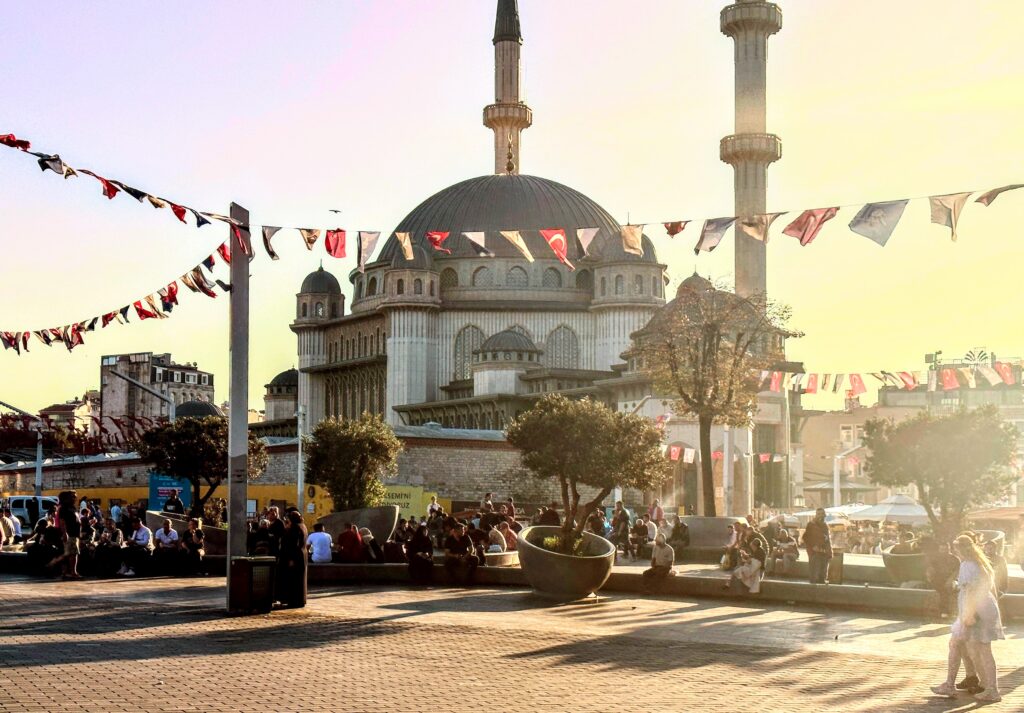
Instead, I’m surrounded by three military guys, yelling “Picture! Picture!” and ordering me to surrender my iPhone. Some military vehicle (a tank?) is parked off to the side. What do we not see? Apparently, part of it is in my photo. But why pick on me?
I play the dumb blonde American tourist (a role which doesn’t stretch my acting skills). I repeat “tamam” (Okay!) and “Pardon!” They delete the photos, every bit as secret as Atatürk’s pajamas, before giving it back. They demand my passport. I say, “Hotel!” and tell them I’ll go get it.
“This is Turkey, lady!” they warn.
I leave and I don’t come back.
Tamam.
I get it.
In a country so honest that strangers followed us to return money we’d dropped; this, too, is Türkiye. Back at the Hilton, there’s a new war on the TV. I can’t turn away from the growing horror in the Middle East. Each time I click the remote, I pray it will have disappeared. But no. Violence is woven into our history books, and today, a page turned.
Meanwhile, our fancy hotel features photos of its most iconic guests – the likes of Jackie O. and Mohammed Ali. Tom is his greatest fan, but so is all of Türkiye.
A six-year-old on the street outside tells us his name: “Mohammed Ali.”
Tom delivers a few air punches in response. The small boy with somber black eyes delivers the bad news: “He is dead.”
And so is Atatürk. And Helen of Troy and the Australian soldier, and now so many others a mere 1200 kilometers away. The latest war is vivid and near. How to have perspective? How will the horrors of today change the course of history for Türkiye – and beyond?
Later at the Istanbul airport, entire families of Orthodox Jews with a huge assortment of luggage and children are en route to the United States. We are going home. And I wonder, what about them?
